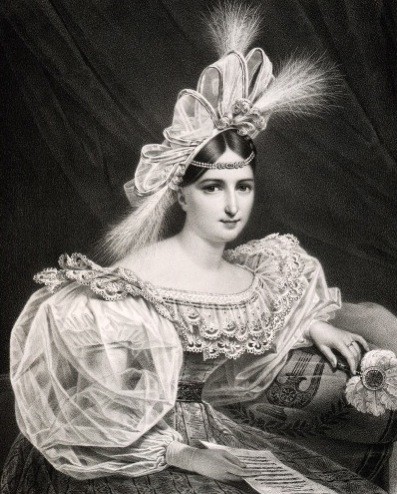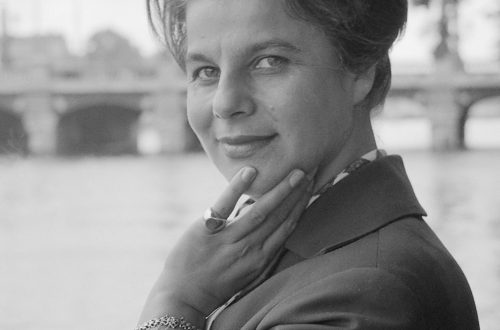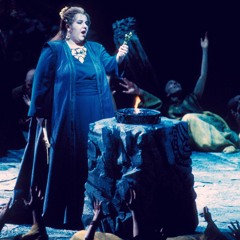
Laure Cinti-Damoreau |
Laure Cinti-Damoreau

Laura Chinti Montalan was born in Paris in 1801. From the age of 7 she began to study music at the Paris Conservatory with Giulio Marco Bordogni. She also studied with the contrabass player of the Grand Opera and the organist Chenier. Later (since 1816) she took lessons from the famous Angelica Catalani, who headed the Parisian “Italien Theatre”. In this theater, the singer made her debut in 1818, already under the Italianized surname Chinti, in the opera The Rare Thing by Martin y Soler. The first success came to the singer in 1819 (Cherubino in Le nozze di Figaro). In 1822 Laura performs in London (without much success). A creative encounter with Rossini took place in 1825, when Cinti sang the part of Countess Folleville in the world premiere of Journey to Reims at the Théâtre-Italiane, that unfortunate and unsuccessful opera dedicated to the coronation of Charles X in Reims, many of the melodies from which the great the Italian used later in The Comte Ory. In 1826, the singer became a soloist at the Grand Opera (debut in Spontini’s Fernand Cortes), where she performed until 1835 (with a break in 1828-1829, when the artist sang in Brussels). In the very first year, she, along with Rossini, expected a triumphant success in the opera The Siege of Corinth (1826, revised Mohammed II), where Laura sang the Pamirs. The role of Neocles was played by Adolf Nurri, who later became her constant partner (in our time, this part is often entrusted to mezzo-soprano). The success was continued in 1827 at the premiere of Moses and Pharaoh (the French version of Moses in Egypt). A year later, a new triumph – the world premiere of “Comte Ory”, written by Rossini in collaboration with Eugene Scribe. The duet of Chinti (Adel) and Nurri (Ori) made an indelible impression, just like the opera itself, the elegance and refinement of its melodies can hardly be overestimated.
All the following year, Rossini enthusiastically composes “William Tell”. The premiere was postponed several times, including due to the fact that Laura, who married the famous tenor Vincent Charles Damoreau (1828-1793) in 1863, was expecting a child. Parisian newspapers wrote about this with the ornate sophistication characteristic of that time: “becoming a legal wife, signora Damoro voluntarily doomed herself to some legal inconvenience, the duration of which can be determined quite accurately.” Attempts to replace the singer ended in failure. Both the public and the composer wanted to see only Laura, who has now become Chinti-Damoro.
Finally, on August 3, 1829, the premiere of William Tell took place. Rossini was repeatedly unlucky with premieres, he even liked to joke that it would be good to consider the second performance as the premiere. But here everything was much more complicated. The audience was not ready for an innovative composition. His new colors and drama were not understood, despite the fact that the work was highly appreciated in professional artistic circles. However, the soloists (Chinti-Damoro as Matilda, Nurri as Arnold, the famous bass Nicola-Prosper Levasseur as Walter Fürst and others) were received very well.
William Tell was Rossini’s last work for the theatre. Meanwhile, Laura’s career developed rapidly. In 1831, she performed in the premiere of Meyerbeer’s Robert the Devil (part of Isabella), sang in operas by Weber, Cherubini, and others. In 1833, Laura toured London for the second time, this time with great success. In 1836-1843 Chinti-Damoro was a soloist at the Opera Comique. Here she participates in the premieres of a number of operas by Aubert, among them – “The Black Domino” (1837, the part of Angela).
In 1943, the singer leaves the stage, but continues to perform in concerts. In 1844 she made a tour of the United States (with the Belgian violinist A.J. Artaud), in 1846 she was applauded by St. Petersburg.
Chinti-Damoro is also known as a vocal teacher. She taught at the Paris Conservatoire (1836-1854). Author of a number of books on the methodology and theory of singing.
According to contemporaries, Cinti-Damoro harmoniously combined the intonational richness of the French vocal school with the virtuoso Italian technique in her art. Her success was all over the place. She entered the history of opera as an outstanding singer of the 1st half of the 19th century.
E. Tsodokov





